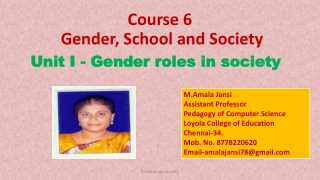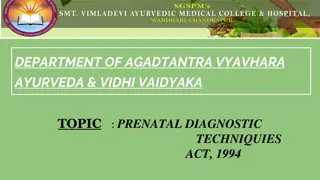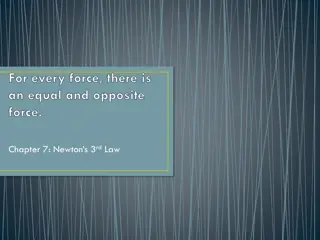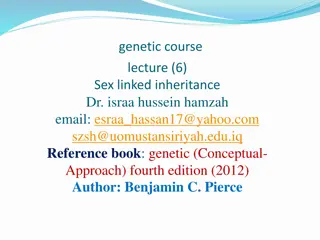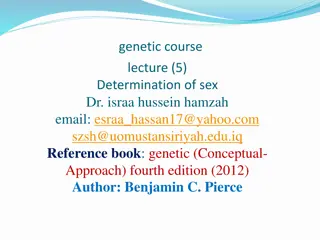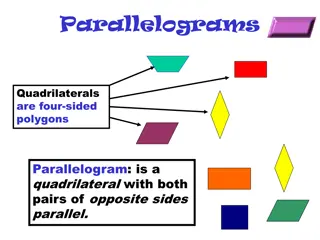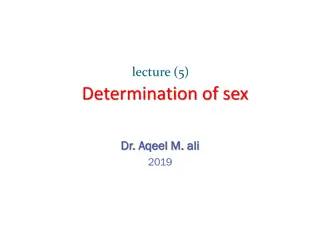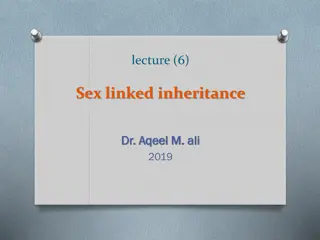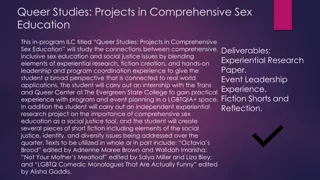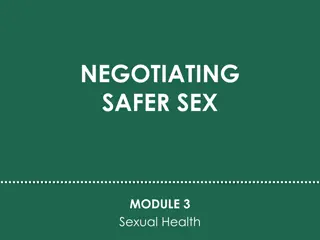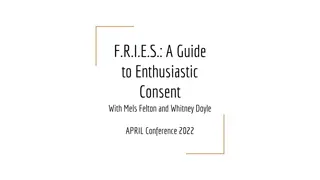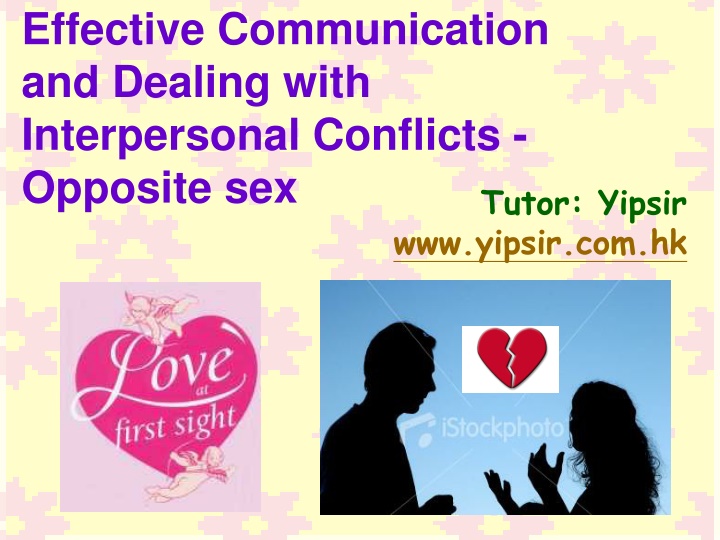
Effective Communication and Dealing with Interpersonal Conflicts: Reflection Assignment Guidelines
Explore your personal development in relation to the course theme through a written reflection report. Assessment criteria include content comprehensiveness, knowledge application, and presentation clarity. Submission requirements and grading details are outlined.
Uploaded on | 0 Views
Download Presentation

Please find below an Image/Link to download the presentation.
The content on the website is provided AS IS for your information and personal use only. It may not be sold, licensed, or shared on other websites without obtaining consent from the author. If you encounter any issues during the download, it is possible that the publisher has removed the file from their server.
You are allowed to download the files provided on this website for personal or commercial use, subject to the condition that they are used lawfully. All files are the property of their respective owners.
The content on the website is provided AS IS for your information and personal use only. It may not be sold, licensed, or shared on other websites without obtaining consent from the author.
E N D
Presentation Transcript
Effective Communication and Dealing with Interpersonal Conflicts - Opposite sex Tutor: Yipsir www.yipsir.com.hk
WRITTEN ASSIGNMENTS Reflection Report (40%) 1. Writing a review to explore your own development with reference to the theme taught in the classes. 2. A zero mark will be given to late submission if no convincing explanation is given. 3. Plagiarism will be penalised and may affect the award of the Pre-Associate Degree.
Criteria for assessment of assignment 1. The comprehensiveness and accuracy of the content 2. The appropriate application of knowledge 3. Clarity in presentation
1. around 800 words. 2. MUST be written in English. 3. Date of submission: 27 April 2007 (Friday), week 13. 4. No marks will be given to late submission. A spare copy of the paper should be kept by the student as a back up against any loss or damage to the original one.
Sample of A, B, C and F grades papers
Participation and round up (Case presentation) (30%) Punctuality and regular attendance Participate actively in all activities and discussions and prepare themselves well by reading the prescribed readings. to share opinions or argue their points and make the discussions an interesting and fruitful learning experience. In week 14 and 15, students will form groups of three. The presentation can be made in English or Cantonese. Each group has to select and decide a real case presentation and hand it to the responsible tutor before week 14. 1. 2. 3. 4.
Contents Close Relationships and Interpersonal Attraction 2. Conflict 1.
Activity 1 Your value on love
1. ( A B C D ) 2. A, ?
The following are for your reference: A: love relationship, B: sexual relationship, Fisherman: money, career and materialistic life, C: conventional moral standard and social norms, and D: family life and responsibility
Close Relationships and Interpersonal Attraction
Activity 2 Are you falling in love with someone?
Love is not to find the right person ; but to be the right one.
What Defines a Close Relationship? 1. Different types friends parents children siblings romantic partners married couples
What Defines a Close Relationship? 1. Different types friends parents children siblings romantic partners married couples
What Defines a Close Relationship? 2. Behavioral interdependence the actions of two people have mutual impact on each other
What Defines a Close Relationship? 3. Need fulfillment the relationship must meet some basic needs emotional intimacy social integration (need for affiliation) assistance to be nurturing reassurance of our self-worth
What Defines a Close Relationship? 4. Emotional attachment must be mutual feelings of love, affection, and/or admiration
What Defines a Close Relationship? 5. Dimensions of variance intensity commitment emotion sexuality gender
How Do People Become Attracted? 1. Exposure the more exposure we have to a stimulus, the more positively we evaluate it mere exposure effect repeated exposure to a stimulus produces familiarity, and familiarity breeds liking and attraction
How Do People Become Attracted? 2. Proximity simple physical proximity can lead to liking proximity was best predictor of friendship if interactions are negative, then proximity will breed disliking
How Do People Become Attracted? 3. Attitude similarity more attracted to people who hold similar attitudes to our own than dissimilar others We like friends of our friends and our enemy s enemy.
How Do People Become Attracted? 4. Physical attractiveness a simple aesthetic appeal in an experiment, students rated partner s physical attractiveness and desire to see their date again only physical attractiveness predicted the desire to date again (intelligence, sincerity, sensitivity) men are more willing to admit it is important (Hatfield et al., 1966)
How Do People Become Attracted? 4. Physical attractiveness Is beauty in the eye of the beholder ? matching hypothesis people tend to chose partners who are similar to them in physical attractiveness (i.e., a good match ) same-sex friendships, dating couples, cohabitants, married couples people who don t match on physical attractiveness may be trading other assets
How Do People Become Attracted? 5. Reciprocity People like positive feedback (Coleman, Jussim, & Abraham, 1987). Even obvious attempts at flattery increase liking (Drachman et. al. 1978).
How Do People Become Attracted? 6. Conditioning Association with positive or negative stimulus influences attractiveness ratings. Negative mood leads to lower attractiveness ratings (Byrne & Clore, 1970). Unpleasant background music when meeting a person leads to subsequent lower attractiveness ratings (May & Hamilton, 1980)
Types of Love What is love? liking love ( , ( ) ( ) (Aron & Aron, 1986, 56 )
Types of Love 1. Companionate love ( ) feelings of mutual respect and trust less emotionally volatile , often found in good friendships
Types of Love 2. Passionate love ( ) intense longing for the person physiological arousal much more emotionally volatile
Types of Love 1. Sternberg s Tripartite Theory of Love passion motivational component intimacy emotional component commitment cognitive component : : :
Sternbergs Tripartite Theory of Love intimacy passion commitment Non-love
Sternbergs Tripartite Theory of Love intimacy passion commitment liking
Sternbergs Tripartite Theory of Love intimacy passion commitment Infatuation
Sternbergs Tripartite Theory of Love intimacy passion commitment Empty love
Sternbergs Tripartite Theory of Love intimacy passion commitment Romantic love
Sternbergs Tripartite Theory of Love intimacy passion commitment Companionate love
Sternbergs Tripartite Theory of Love intimacy passion commitment Fatuous love
Sternbergs Tripartite Theory of Love intimacy passion commitment Consummate love
What types of their love are they? intimacy passion commitment ( ) .
Progressing from casual dating to steady dating
As a couple moves through casual to steady dating there are various changes in the nature of the relationship. These include:
1. Spending more time in each other s company
2. An increase in positive feelings towards each other; there is more liking, loving and trust 3. An increase in the expression of feelings, * both positive and negative; * potential for the growth of both intimacy and conflict.
4. Mutual disclosure of more intimate aspects of the self, * including attitudes and values about the other partner * relationship commitment.
5.An increased concern with the others welfare * joy is caused by their joy, * pain by their pain. 6. Sense of unity and commitment; * both partners increasingly view themselves as a unit, * Associated with this sense of shared identity, * reduce in uncertainty about the future of the relationship.
Long Term Relationships 1. Stage theory (SVR) stimulus: physical attractiveness value: similarity of values and beliefs role: fulfillment of roles and commitment
Long Term Relationships 2. investment model of relationships investments -- things expended on the relationships that cannot be recouped the more investment, the more stable


